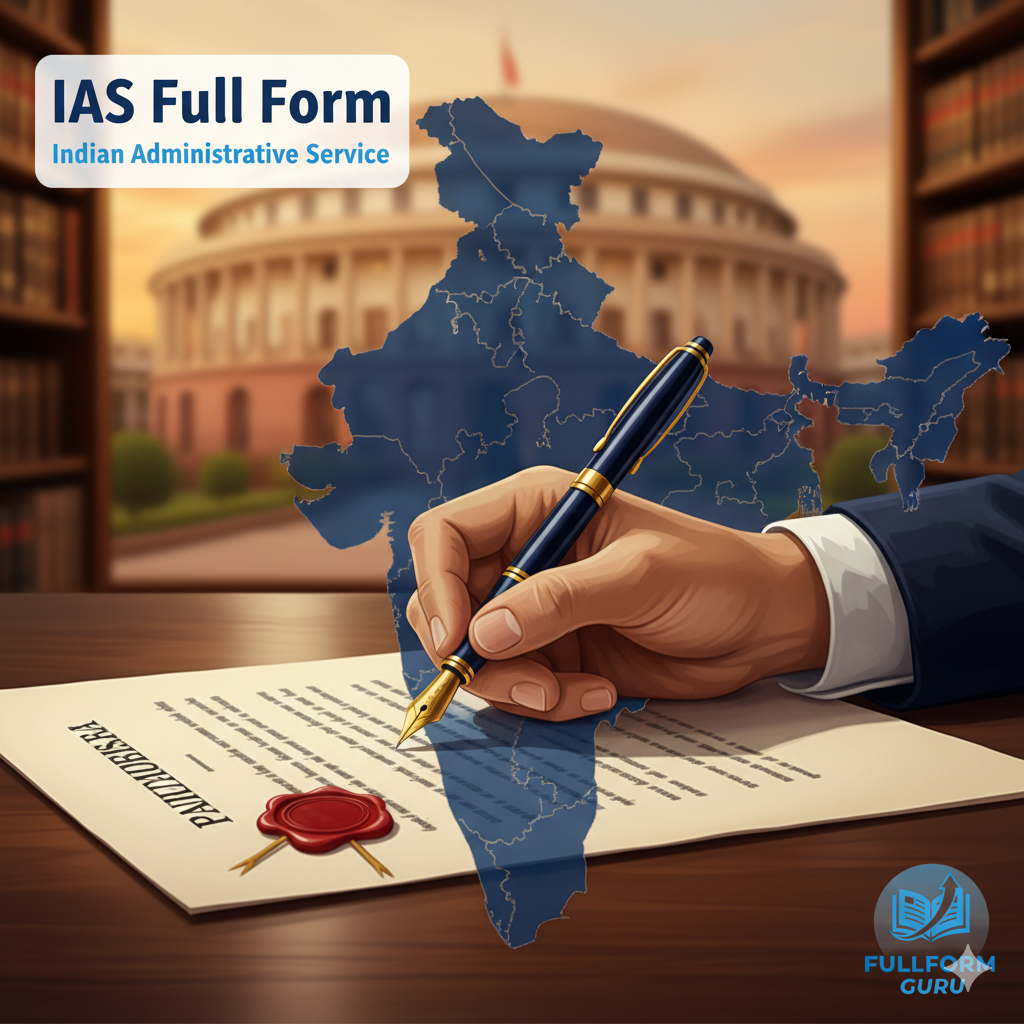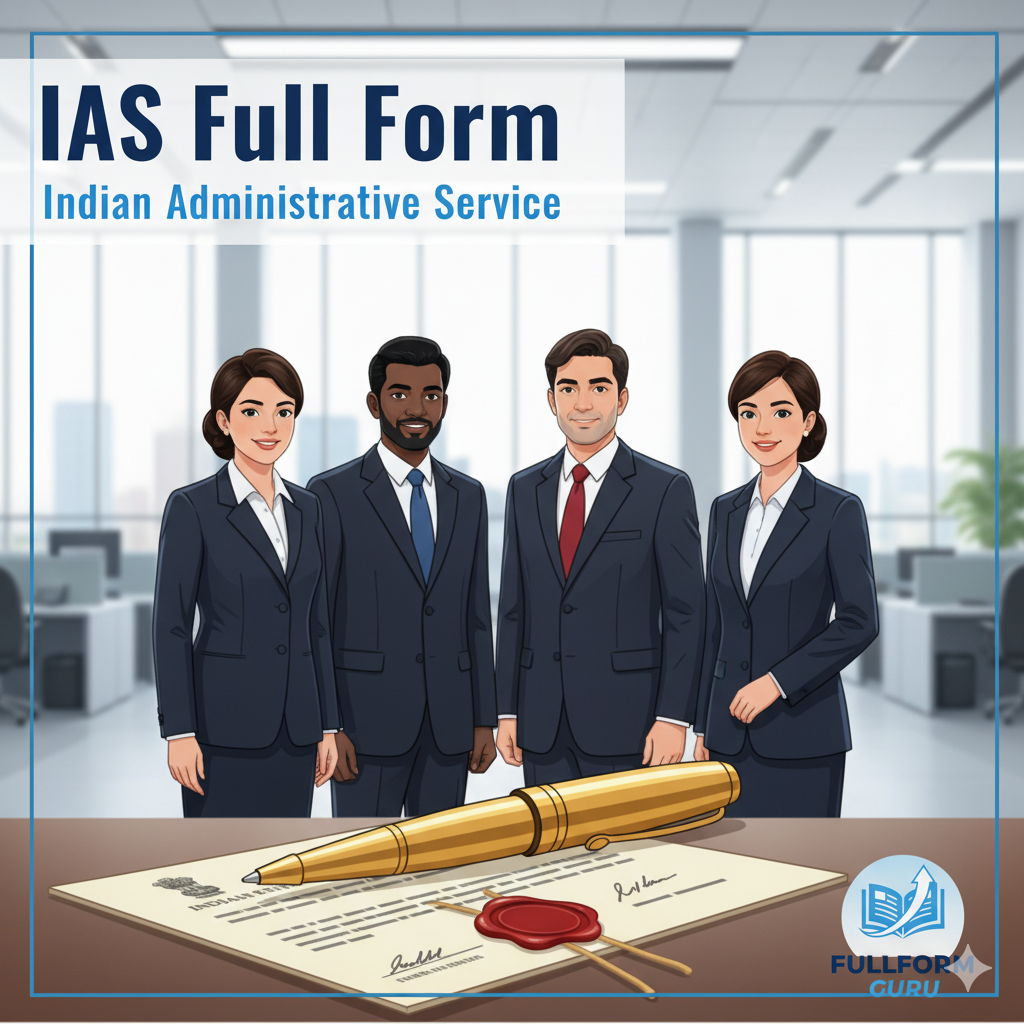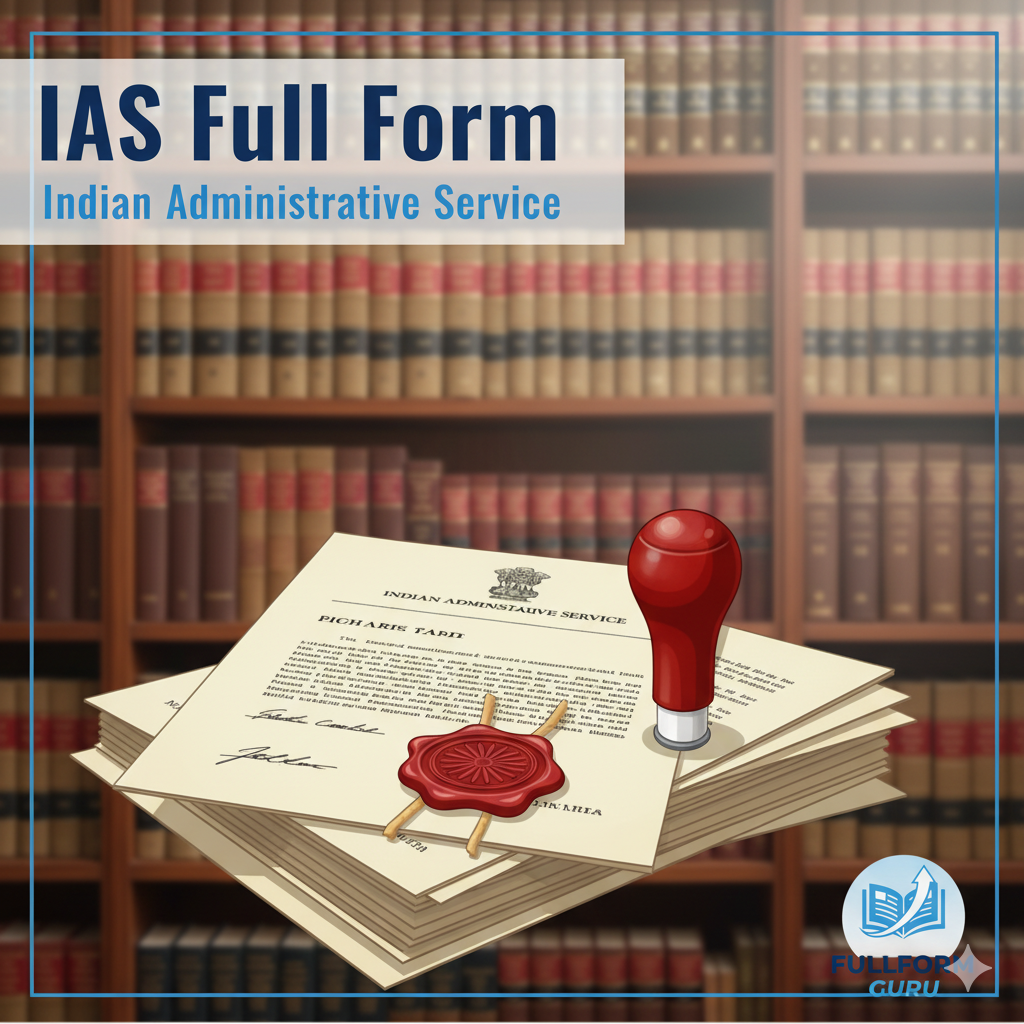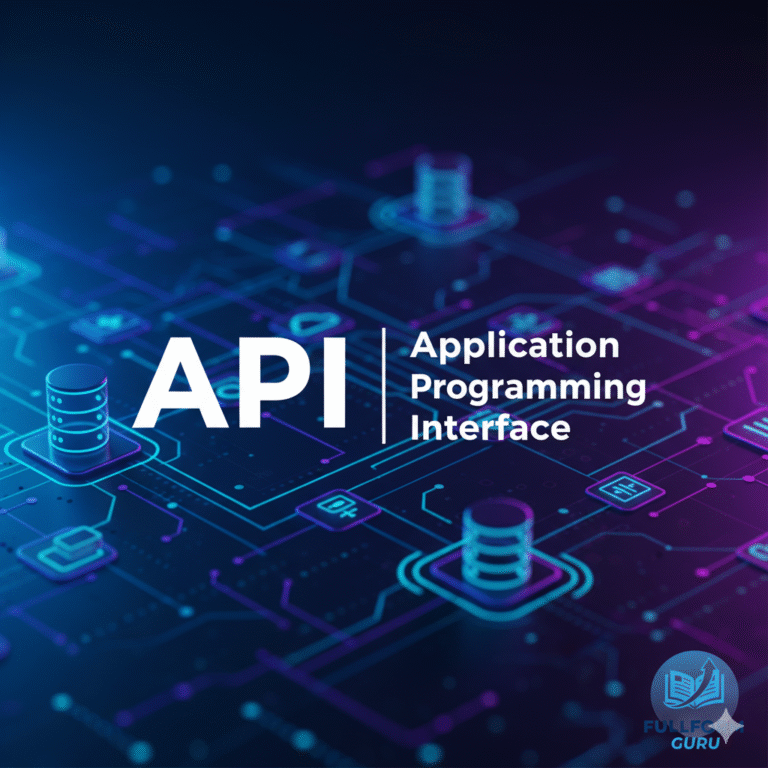IAS Full Form – Full Form of IAS

IAS Full Form: Meaning, Eligibility, Benefits, and Career Opportunities
Introduction
The Indian Administrative Service (IAS) is one of the most respected and prestigious careers in India. It is not just a government job but a position of responsibility, power, and service to the nation. Many students dream of becoming an IAS officer because it offers an opportunity to contribute to society, shape government decisions, and bring about real change in people’s lives. Known as one of the most challenging exams in the country, the path to the IAS requires dedication, discipline, and hard work.
IAS Full Form and Meaning
IAS stands for Indian Administrative Service, which is one of the most respected civil services in India. It is the topmost civil service in India, and officers selected for this service play a vital role in running the government machinery.
An IAS officer is responsible for:
- Implementing government policies and programs
- Managing administration at the district, state, and national levels
- Advising ministers in decision-making processes
- Ensuring law and order, development, and smooth governance
In short, IAS officers act as the bridge between the government and the citizens, ensuring that policies reach the people effectively.
Eligibility Criteria for IAS
To become an IAS officer, candidates are required to fulfill certain eligibility conditions set by the Union Public Service Commission (UPSC). These criteria ensure that only qualified and deserving individuals are eligible for the exam.
1. Nationality
- Must be a citizen of India.
- Some exceptions exist for certain government posts, but IAS is strictly for Indian citizens.
2. Educational Qualification
- To apply, candidates must hold a bachelor’s degree in any field from a recognized university.
- Students in their final year are eligible to apply, provided they present proof of graduation before the final selection.
3. Age Limit
- The minimum age is 21 years.
- The maximum age is 32 years (with relaxations for various categories).
4. Number of Attempts
- General category: 6 attempts
- OBC: 9 attempts
- SC/ST: Unlimited attempts until the maximum age limit

Exam Stages of IAS
To enter the IAS, candidates must clear the UPSC Civil Services Examination (CSE). It is one of the toughest exams in the world, but with the right strategy, candidates can succeed. The exam takes place in three main stages:
- Preliminary Examination (Prelims)
- Objective-type test with multiple-choice questions.
- Tests General Studies (current affairs, history, polity, geography, etc.) and CSAT (aptitude, reasoning, comprehension).
- Preliminary exams are qualifying in nature, so the marks do not count toward the final merit list.
- Main Examination (Mains)
- Descriptive (written) exam with nine papers.
- Includes essay writing, General Studies papers, and optional subjects.
- Tests deep knowledge, analytical skills, and clear expression.
- Marks obtained here are crucial for the final ranking.
- Personality Test (Interview)
- Face-to-face interview conducted by the UPSC board.
- Assesses communication, leadership, problem-solving, and decision-making ability.
- The result depends on the combined scores of the Main examination and the interview.
Only candidates who clear all three stages successfully become IAS officers.
Challenges in the IAS Journey
Preparing for the IAS is not an easy path. Aspirants face one of the most competitive examinations in the world, with lakhs of candidates appearing every year for a limited number of posts. The vast syllabus demands extended study hours, careful planning, and regular revision. Many students also struggle with stress, time management, and maintaining motivation during preparation.
Even after being selected, IAS officers face high-pressure responsibilities, such as handling law and order, managing crises, and making quick decisions that affect thousands of people. They often work long hours with limited resources, which can be mentally and emotionally challenging. However, these obstacles help shape them into strong and resilient leaders who can serve society with dedication and commitment.
Benefits of Becoming an IAS Officer
The Indian Administrative Service is one of the most prestigious careers in India, offering not just authority but also long-term stability and opportunities for nation-building. Here are the main benefits:
1. Job Security
IAS officers enjoy one of the most secure jobs in India, as they are part of the permanent civil services.
2. Attractive Salary and Perks
- Competitive pay scales.
- Residence, vehicle, domestic help, and travel allowances.
- Retirement benefits like pensions.
3. Authority and Respect
IAS officers hold influential positions, making key decisions that affect society. It brings respect and recognition.
4. Opportunities for Nation-Building
- Policy formulation and implementation.
- Working directly with the public to solve problems.
- Driving development projects in education, health, and infrastructure.
5. Career Growth
- IAS officers can rise to top government positions such as Cabinet Secretary, Chief Secretary, or heads of key ministries.
- Opportunities for international postings and training.
6. Personal Satisfaction
The role provides deep fulfillment to individuals dedicated to public service and driving meaningful change.

Career Opportunities for IAS Officers
A career in the Indian Administrative Service opens doors to multiple opportunities. An IAS Full Form officer’s journey is not limited to administration; it expands into policy-making, leadership, and international representation.
1. District Administration
- Managing law and order as District Magistrate or Collector.
- Overseeing development programs and revenue collection.
2. State Government Roles
- Serving as Secretaries or Heads of various departments such as Education, Health, or Finance.
- Designing and implementing state-level policies.
3. Central Government Roles
- Working in ministries like Home Affairs, Finance, External Affairs, or Defense.
- Shaping national policies that impact millions of citizens.
4. International Opportunities
- Representing India in global organizations like the UN or the World Bank.
- Attending advanced training programs abroad.
5. Leadership Roles
- Becoming the Chief Secretary of a state.
- Rising to the post of Cabinet Secretary, the highest-ranking civil servant in India.
Conclusion
The Full form of IAS is Indian Administrative Service, one of the most respected and rewarding careers in India. It combines power, responsibility, and the chance to make a real difference in society. Becoming an IAS officer is not just about clearing an exam—it’s about leadership, integrity, and lifelong service to the nation.
If you are passionate about governance, public service, and driving positive change, then IAS is the right career path for you.
Dedication, hard work, and perseverance can transform your dream of becoming an IAS officer into reality—step forward with confidence, because the nation needs leaders like you.







